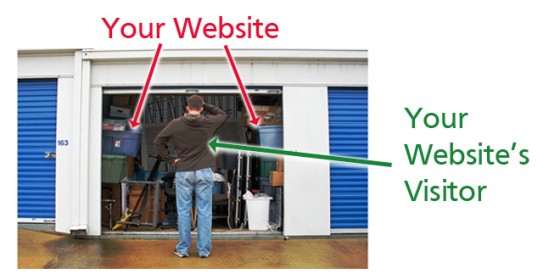Why I Hate the Term SEO & What to Optimize Instead
Potential clients always ask “What about SEO? Do you guys do SEO?”
SEO (Search Engine Optimization) is my least favorite term of all the buzzwords in our industry. In fact, I despise it.
And it’s not because of the countless SEO scams out there, promising you position #1 in Google for any keyword in the world, and/or the insane amounts of money innocent clients are spending on it.
It’s because it’s simply misleading.
Who to Really Optimize For
The term “SEO” already implies that you are doing or are about to do the wrong thing. You optimize for Search Engines. Really? Why? Because a Search Engine is your potential customer? Because you expect a Search Engine to buy something from you?
Shouldn’t you instead be optimizing your content, your design, your layout — simply everything on your website for your visitors? Your actual potential customers? The ones that you want to buy your products or purchase your services?
What To Optimize First
First and foremost you have to optimize your thought process.
Once you understand that a high search engine ranking (and the traffic it might generate) doesn’t mean anything, you can really get to work.
Sure, ranking is important. But what’s way more important is what happens next.
Let me give you an example: A certain over-optimized website “ranks” well for a particular keyword or search term. It might even show up on the first page of Google. “Great!” thinks the website’s owner, “We did it! The money we spent was worth it!”
What happens next? A user clicks on the link and gets taken to the website. “Great,” says the website owner, “We have traffic! We have visitors! We did it again!”
Well, this is where reality sets in. The users don’t buy. They don’t call. In fact, the majority of visitors leave immediately. “What happened?”, cries the website owner, “But we are on the first page of Google! We’re doing everything right!” Wrong.
The poor user is now confronted with a plethora of “keyword-rich” mambo-jumbo and endless paragraphs of completely senseless and boring text (hey, this is how you were able to rank in the first place, remember?).
What’s (most likely) missing is what the user is actually looking for: Value. A simple reason to stay, to buy, to hang out on your website and to explore it further.
Stop Obsessing Over SEO
 I’m not saying you don’t have a great product. You might even be the best in your business.
I’m not saying you don’t have a great product. You might even be the best in your business.
But if nobody can see it, because your SEO specialist (or whoever) packed your website so full of stuff, people will rather walk away and try their luck somewhere else where the information they’re looking for is much easier accessible.
Think of this super-optimized website as a tightly-packed, full-to-the-brim storage unit. Every last item got squeezed in there, there is hardly an inch that’s not used.

Instead, Simply Give Your Users What They Want
“Now you’re telling me? After we spent all this money??” laments the website owner.
Errr, sorry. I was not aware that this was such a new concept. Who did you build the website for in the first place? Oh, right, the Search Engines. My bad.
Remember: Search Engines are not your customers, they are simply a tool for you to get customers. So stop treating them with the proverbial white glove, and concentrate on who is really important: Your Website Visitors.
A Simple Website-Must-Have-List
– Make sure your website is up-to-par with current coding standards
– Make sure your site is visually appealing & that the content is easy to read
– Make sure your site is error-free — and I mean free of ALL errors, including spelling and grammatical errors. Hire a proofreader! It’s worth it.
– Ensure mobile users have an optimized experience and that all vital information is easily accessible especially for mobile users
– Check your site’s loading time
– Provide useful, compelling & unique content
(only to list the most important ones)
The Next Step: Conversion Optimization
If you can provide solid information, and have a way to provide it in an efficient and visually appealing way (= a good website), it’s time think about Conversion Optimization. Because the work never stops and your users will thank you for it.
Only if you keep improving you will be and stay successful
We are happy to help you with all of your website issues – and we provide solutions!






Couldn’t agree more Nina, there are a lot of misconceptions on our industry. It’s really about optimizing for human visitors and concentrating in offering great user experience when people land on our website. We should be “talking” to people and again, concentrate on delivering great visitor experience through superb content. :)
“People don’t by from websites, people buy from people” – Dr. Flint McLaughlin, Marketing Experiments
Awesome post Nina reminding all of us as to what our true focus should be in website design and approach. Very essential insights and information. Thanks.
Oh my – I love the term “conversion management”. The hyper optimization on some websites make the content unreadable. There is a local company that has a niche near me doing web dev for landscapers and the websites are strictly SEO and not “CO” based. I had to change my strategy a bit for my landscaper client, but after 2 months, we grabbed the #1 organic listing in 7 keywords. I cite traffic quality, open graph, structured data, awesome metatag use and unique content for the results. The user on this website has a genuinely awesome experience on the site, which by the way, converts one lead per day minimum, and we convert 62% of his visitors into leads via the web contact forms … plus phone calls. CONTENT IS KING … that has never changed.